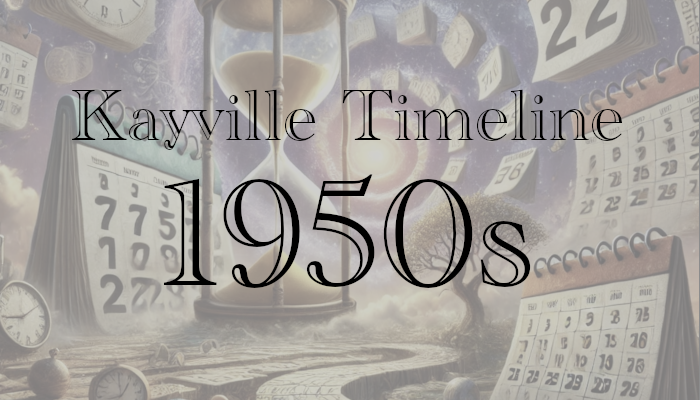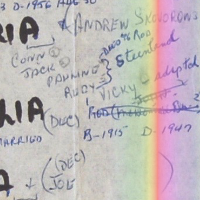The 1950s were a transformative decade for Saskatchewan, marked by economic growth and political innovation. During this period, the province experienced significant agricultural development, benefiting from high wheat prices and advancements in farming technology. This prosperity helped stabilize the economy, which had been impacted by the Great Depression and the Second World War.
Politically, the 1950s in Saskatchewan were dominated by the Co-operative Commonwealth Federation (CCF), led by Tommy Douglas, who was premier from 1944 to 1961. The CCF implemented groundbreaking social welfare programs, including the first universal healthcare system in North America, which was later adopted nationwide.
This era also saw increased urbanization and infrastructure development, including better roads and expanded electricity and telephone services, which reduced the isolation of rural communities. Additionally, the discovery of oil in 1952 in the Lloydminster area diversified the province’s economy, lessening its reliance on agriculture and stimulating new economic opportunities in the energy sector.
Timeline 1950 – 1959
1950
- (or 1947) George Majeran moved to Kayville from Sudbury and purchased “The Ursu Hotel” on the northwest corner of the main intersection from George Ursu Sr..1 How could he know it would burn down six months later? The Majeran family would operate the hotel for 27 years (1950-1977).2
- A phone directory printed February 1950 lists seven phone numbers for Kayville: George Cojocari General Store, Kayville Co-op Association, Kayville Flour Mill, Kayville Hotel, Kayville Motors & Machine, Rudolph Ursu General Store and Victory Store.3
- Dan Popescue Jr. buys the Cafe (originally built by Alex Bodnaresk in 1924) during the summer from Pete Morse Jr..4 Little did he know that his new Cafe enterprise would burn down that autumn.
- Kayville as with other famous cities of the world like London, England and Chicago, USA was devastated and reshaped by fire. On September 13, 1950 the largest fire the town had ever seen destroyed all of the buildings on the block on the northwest corner of the main intersection. The fire began in the cafe next to George Majeran’s Hotel.4
1951
- Kayville is given the status of “Organized Hamlet” by the Saskatchewan Government which means that they need to elect a small board and can keep a portion of municipal taxes.5,6
- George Majeran builds a hotel, bar and cafe out of brick on the northwest corner of the main intersection following a fire the previous year and calls it “The Georgian Hotel”.4,2
- Dan Popescue Jr. rebuilt the Cafe he bought in 1950 and was lost in a fire that same year. The new Cafe was built on the same spot as the original, had it’s grand opening during the summer of 1951 and was named ‘Model Cafe’. Dan operated the Cafe for one more year.4
1952
- Pete Fluter (or maybe Dan Litowski7) bought the ‘Model Cafe’ from Dan Popescue Jr. and operated it for a small number of years. A cafe operated on the site for another eighteen years under a succession of many owners before finally closing in 1970.4
1953
- Dan Ritsco resigns as Postmaster for Kayville Post Office on May 11, 1953 after 25 years of service.8
- Mary Ritsco is appointed Postmaster for Kayville on July 8, 1953. She will be Postmaster for almost twenty years, resigning in 1972.8
- Electricity arrived to Kayville in 1953 and the first street lights were installed.4

1950’s Kayville Co-op
1954
- Dan Daniel bought the first television in town.4
1955
1956
- bef 1957 John Buburuz operated a bowling alley, poolroom and barbershop in one large building for a number of years.4
1957
- The building previously used by John Buburuz to operate a bowling alley, poolroom and barbershop was modified and extended to become the towns curling rink (not the same building as the more current rink) with two sheets of ice. It was used for the 1958-59 curling season. A more modern rink would be built in 1971 by the old train station.4
- The house, flour mill and bakery built on the east side of town by Mike Majeran (southwest corner of SW 13-09-24-W2) around 1930 burnt down.
- Security Lumber Company which was a town fixture since the beginning closes after about 40 years of operation.4
- Saskatchewan became the first province to complete it’s portion of the Trans-Canada Highway (As per the 1949 Trans-Canada Highway Act).9
1958
- The organization which ran the community centre, formed in 1940, changed its’ name from the Kayville Community Hall Co-op Association Limited to Kayville Co-operative Community Centre.4
- Kayville’s four-room school is built in town.10
1959
- George Ursu”, Pages 332-333, “Prairie Grass to Golden Grain: RM 70 Ogema & Surrounding Areas” (1982), ISBN 0-919-533-10-8, Ogema and District Historical Society ↩︎
- Majeran Family History Website http://majeran.tripod.com/majeranp.htm, viewed Dec 10, 2018 ↩︎
- 1A Telephone Directory Assiniboia Estavan Gravelbourg Oxbox Weyburn, February 1950, Page 47, “Kayville – Peter Rotar Agent – Exchange Subscribers” ↩︎
- “Kayville”, Pages 30-33, Karl R. Jackle, “Prairie Grass to Golden Grain: RM 70 Ogema & Surrounding Areas” (1982), ISBN 0-919-533-10-8, Ogema and District Historical Society ↩︎
- “Kayville, Saskatchewan”, Wikipedia, https://en.wikipedia.org/wiki/Kayville,_Saskatchewan, Viewed April 25, 2017 ↩︎
- “Establishing an Organized Hamlets”, Government of Saskatchewan, https://www.saskatchewan.ca/government/municipal-administration/community-planning-land-use-and-development/municipal-status-and-boundary-changes/establishing-an-organized-hamlets, Viewed April 25, 2017 ↩︎
- “Dan and Rose Popescul”, Page 326, George Popescul, “Prairie Grass to Golden Grain: RM 70 Ogema & Surrounding Areas” (1982), ISBN 0-919-533-10-8, Ogema and District Historical Society ↩︎
- Library and Archives Canada, Post Offices and Postmasters, Source: PSFDS03-(10149), Item Number: 4680, “Kayville” ↩︎
- Berry, David. “Trans-Canada Highway”. The Canadian Encyclopedia, 04 January 2021, Historica Canada. www.thecanadianencyclopedia.ca/en/article/trans-canada-highway. Accessed 27 June 2024. ↩︎
- “Excelsis S.D. Excelsis School No. 2994”, Pages 308-309, Karl R. Jackle, “Prairie Grass to Golden Grain: RM 70 Ogema & Surrounding Areas” (1982), ISBN 0-919-533-10-8, Ogema and District Historical Society ↩︎





